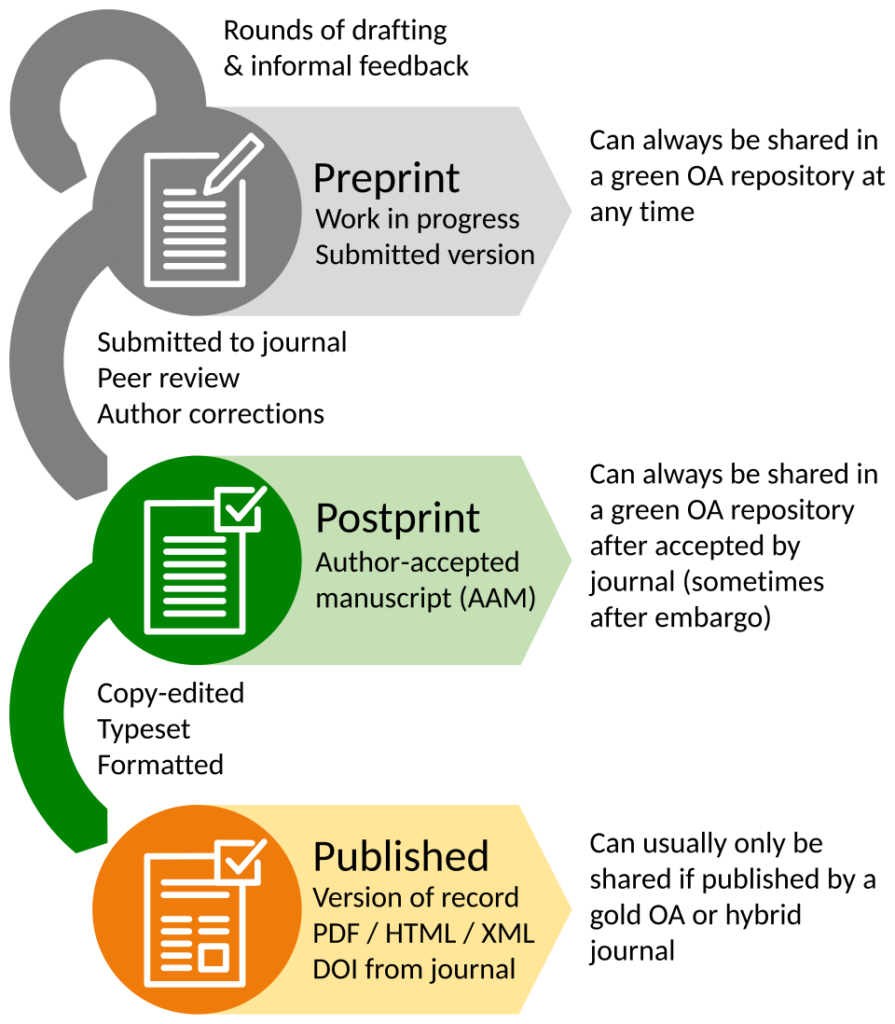Open science is at the heart of EMBL’s strategy and research mission. In line with this commitment and in support of the principles of cOAlition S, EMBL is introducing a Rights Retention Policy to ensure that the results of our research are freely and widely accessible to the global scientific community.
Rights Retention is based on the simple principle that authors and institutions should retain some rights to their publications. As part of our updated policy, EMBL will assert a non-exclusive, irrevocable, worldwide licence to deposit the Author Accepted Manuscript under a CC-BY licence. This allows authors to post the AAM in Europe PMC, EMBL’s institutional repository without an embargo, share it among colleagues, and use it in future research.
How can researchers ensure their paper is Open Access?
EMBL’s updated Open Science Policy comes into effect on 1st July 2025. The new policy applies to all papers submitted on or after that day. After six months of implementation, the policy will apply to all papers.
There are three routes to publishing your paper.
- Open Access Agreements. EMBL has signed up to a number of Transformative Agreements with publishers. A list of our current agreements can be found on our website. Note: A paper must have an EMBL corresponding author to be eligible for the Transformative Agreements.
- Fully Open Access Journal. EMBL’s central APC budget will continue to cover the Article Processing Charges for articles published in fully Open Access journals.
- Deposit the Author Accepted Manuscript (Rights Retention). Publish the Version of Record behind a paywall and deposit the Author Accepted Manuscript with a CC-BY licence into Europe PMC at the time of publication, with no embargo.
To understand the best route for publication, contact osim@embl.org.
What researchers need to do?
On submission: In order to convey the EMBL’s Rights Retention Policy, publishers have been formally notified in advance. For additional transparency, or where a funder requires it, authors can include the following statement in the acknowledgement section and cover letter of their article submission:
“For the purpose of Open Access, a CC-BY public copyright licence has been applied to the present document and will be applied to all subsequent versions up to the Author Accepted Manuscript arising from this submission.”
On acceptance: Contact OSIM at osim@embl.org. OSIM will deposit the Author Accepted Manuscript on the author’s behalf with a Creative Commons Attribution licence (CC BY) in Europe PMC without an embargo.
Frequently Asked Questions
Why has EMBL introduced a Rights Retention Strategy?
Introducing a Rights Retention Strategy confirms EMBL’s commitment to Open Science and ensures that EMBL’s policies are up-to-date and compliant with our largest funders. It also guarantees that authors will continue to have access to their research and disseminate it in any way they see fit.
Who does the policy apply to?
The policy applies to all EMBL researchers.
What experience do other organisations have with the RRS?
The concept of the Rights Retention Strategy (RRS) has been around for years. In 2008, Harvard was the first university to implement a type of RRS called a scholarly communications licence. In 2021, the University of Edinburgh was the first institution in Europe to introduce a RRS. Over 50 institutions have since followed suit. A list of institutions that have implemented RRS is maintained by the Open Access Directory.
Which publishers have you already reached out to? What if mine isn’t on the list?
OSIM contacted every publisher that an EMBL lead author has published with over the last five years. Attached is a list of publishers EMBL has contacted. Please check to see if your publisher is listed.
If you are intending to publish your article with a publisher not contacted, get in touch with osim@embl.org and we will reach out to the publishers. Alternatively, you can include the RRS statement above on the cover letter and submitted manuscript
Do I need to get agreement from my co-authors?
Yes, all authors should agree on the publishing strategy. It is best to keep any funder requirements in mind. If there are any issues or you need help explaining EMBL’s policy, contact osim@embl.org.
What is a CC BY licence?
A Creative Commons Attribution licence allows readers to access your paper for free, to copy and share it, to adapt and edit it, including for commercial purposes. The user must always attribute you as the author of the original work.
I am Wellcome/UKRI/ERC funded, will this policy help me to comply with their open access policies?
Yes, by updating our Open Science Policy, EMBL’s requirements now align with the funder requirements for UKRI, ERC, and Wellcome.
Are there any exceptions to the policy?
See Section 12 of the Open Science Policy for any exceptions.
What is the Author Accepted Manuscript?
The Author Accepted Manuscript (also know as the post-print) is the document that is post-peer review but before the publishers begin to format and add their logos. It is not the published version, but has the same text as the published version.


Image by Thomas Shafee adapted from diagram by Ginny Barbour under a Creative Commons Attribution 4.0 International Licence